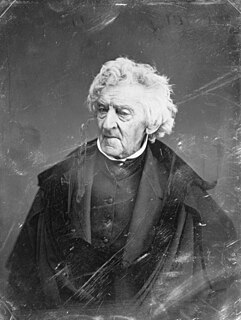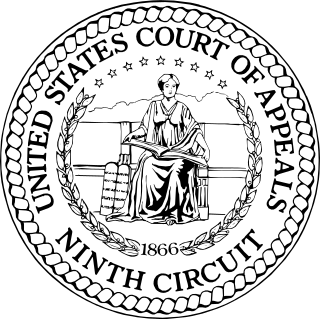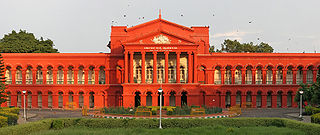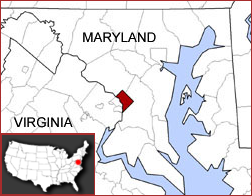
The Supreme Court of the United States is the highest court in the federal judiciary of the United States. Established pursuant to Article III of the U.S. Constitution in 1789, it has original jurisdiction over a narrow range of cases, including suits between two or more states and those involving ambassadors. It also has ultimate appellate jurisdiction over all federal court and state court cases that involve a point of federal constitutional or statutory law. The Court has the power of judicial review, the ability to invalidate a statute for violating a provision of the Constitution or an executive act for being unlawful. However, it may act only within the context of a case in an area of law over which it has jurisdiction. The court may decide cases having political overtones, but it has ruled that it does not have power to decide nonjusticiable political questions. Each year it agrees to hear about one hundred to one hundred fifty of the more than seven thousand cases that it is asked to review.

The United States courts of appeals or circuit courts are the intermediate appellate courts of the United States federal court system. A court of appeals decides appeals from the district courts within its federal judicial circuit, and in some instances from other designated federal courts and administrative agencies.
Jury nullification is a concept where members of a trial jury find a defendant not guilty if they do not support a government's law, do not believe it is constitutional or humane, or do not support a possible punishment for breaking the law. This may happen in both civil and criminal trials. In a criminal trial, a jury nullifies by acquitting a defendant, even though the members of the jury may believe that the defendant did commit the alleged crime. This may occur when members of the jury disagree with the law the defendant has been charged with breaking, or believe that the law should not be applied in that particular case. A jury can similarly convict a defendant on the ground of disagreement with an existing law, even if no law is broken.
Bolling v. Sharpe, 347 U.S. 497 (1954), is a landmark United States Supreme Court case in which the Court held that the Constitution prohibits segregated public schools in the District of Columbia. Originally argued on December 10–11, 1952, a year before Brown v. Board of Education, Bolling was reargued on December 8–9, 1953, and was unanimously decided on May 17, 1954, the same day as Brown. The Bolling decision was supplemented in 1955 with the second Brown opinion, which ordered desegregation "with all deliberate speed". In Bolling, the Court did not address school desegregation in the context of the Fourteenth Amendment's Equal Protection Clause, which applies only to the states, but rather held that school segregation was unconstitutional under the Due Process Clause of the Fifth Amendment to the United States Constitution. The Court observed that the Fifth Amendment to the United States Constitution lacked an Equal Protection Clause, as in the Fourteenth Amendment to the United States Constitution. The Court held, however, that the concepts of Equal Protection and Due Process are not mutually exclusive, establishing the reverse incorporation doctrine.

The United States Court of Appeals for the District of Columbia Circuit known informally as the D.C. Circuit, is the federal appellate court for the U.S. District Court for the District of Columbia. Appeals from the D.C. Circuit, as with all U.S. Courts of Appeals, are heard on a discretionary basis by the Supreme Court. It should not be confused with the United States Court of Appeals for the Federal Circuit, which is limited in jurisdiction by subject matter rather than geography, or with the District of Columbia Court of Appeals, which is roughly equivalent to a state supreme court in the District of Columbia, and was established in 1970 to relieve the D.C. Circuit from having to take appeals from the local D.C. trial court.

William Cranch was an American attorney and judge. He was notable for his role as the second reporter of decisions of the Supreme Court of the United States and his long tenure as a judge on the United States Circuit Court of the District of Columbia.
Cheek v. United States, 498 U.S. 192 (1991), was a United States Supreme Court case in which the Court reversed the conviction of John L. Cheek, a tax protester, for willful failure to file tax returns and tax evasion. The Court held that an actual good-faith belief that one is not violating the tax law, based on a misunderstanding caused by the complexity of the tax law, negates willfulness, even if that belief is irrational or unreasonable. The Court also ruled that an actual belief that the tax law is invalid or unconstitutional is not a good faith belief based on a misunderstanding caused by the complexity of the tax law, and is not a defense.

The Supreme Court of the United States handed down sixteen per curiam opinions during its 2005 term, which lasted from October 3, 2005 until October 1, 2006.
Tax protesters in the United States have advanced a number of arguments asserting that the assessment and collection of the federal income tax violates statutes enacted by the United States Congress and signed into law by the President. Such arguments generally claim that certain statutes fail to create a duty to pay taxes, that such statutes do not impose the income tax on wages or other types of income claimed by the tax protesters, or that provisions within a given statute exempt the tax protesters from a duty to pay.
Feltner v. Columbia Pictures Television, Inc., 523 U.S. 340 (1998), was a case in which the Supreme Court of the United States ruled that if there is to be an award of statutory damages in a copyright infringement case, then the opposing party has the right to demand a jury trial.
Tennard v. Dretke, 542 U.S. 274 (2004), was a United States Supreme Court case in which the court was asked whether evidence of the defendant's low IQ in a death penalty trial had been adequately presented to the jury for full consideration in the penalty phase of his trial. The Supreme Court held that not considering a defendant's low IQ would breach his Eighth Amendment rights and constitute a cruel and unusual punishment.
Tax protesters in the United States advance a number of constitutional arguments asserting that the imposition, assessment and collection of the federal income tax violates the United States Constitution. These kinds of arguments, though related to, are distinguished from statutory and administrative arguments, which presuppose the constitutionality of the income tax, as well as from general conspiracy arguments, which are based upon the proposition that the three branches of the federal government are involved together in a deliberate, on-going campaign of deception for the purpose of defrauding individuals or entities of their wealth or profits. Although constitutional challenges to U.S. tax laws are frequently directed towards the validity and effect of the Sixteenth Amendment, assertions that the income tax violates various other provisions of the Constitution have been made as well.

Freedom suits were lawsuits in the Thirteen Colonies and the United States filed by enslaved people against slaveholders to assert claims to freedom, often based on descent from a free maternal ancestor, or time held as a resident in a free state or territory.

United States v. Kilbride, 584 F.3d 1240 is a case from the United States Court of Appeals for the Ninth Circuit rejecting an appeal from two individuals convicted of violating the CAN SPAM Act and US obscenity law. The defendants were appealing convictions on 8 counts from the District Court of Arizona for distributing pornographic spam via email. The second count which the defendants were found guilty of involved the falsification of the "From" field of email headers, which is illegal to do multiple times in commercial settings under 18 USC § 1037(a)(3). The case is particularly notable because of the majority opinion on obscenity, in which Judge Fletcher writes an argument endorsing the use of a national community obscenity standard for the internet.
United States v. More, 7 U.S. 159 (1805), was a United States Supreme Court case in which the Court held that it had no jurisdiction to hear appeals from criminal cases in the circuit courts by writs of error. Relying on the Exceptions Clause, More held that Congress's enumerated grants of appellate jurisdiction to the Court operated as an exercise of Congress's power to eliminate all other forms of appellate jurisdiction.

In law, an appeal is the process in which cases are reviewed, where parties request a formal change to an official decision. Appeals function both as a process for error correction as well as a process of clarifying and interpreting law. Although appellate courts have existed for thousands of years, common law countries did not incorporate an affirmative right to appeal into their jurisprudence until the 19th century.
Schmuck v. United States, 489 U.S. 705 (1989), is a United States Supreme Court decision on criminal law and procedure. By a 5–4 margin it upheld the mail fraud conviction of an Illinois man and resolved a conflict among the appellate circuits over which test to use to determine if a defendant was entitled to a jury instruction allowing conviction on a lesser included charge. Justice Harry Blackmun wrote for the majority; Antonin Scalia for the dissent.
McFadden v. United States, 576 U.S. ___ (2015), was a United States Supreme Court case in which the Court held that section 841 of the Controlled Substances Act requires the government to prove that to be in criminal violation, a defendant must be aware that an analogue defined by the Controlled Substance Analogue Enforcement Act with which he was dealing was a controlled substance.
District of Columbia v. Wesby, 583 U.S. ___ (2018), was a United States Supreme Court case in which the Court held that police officers had probable cause to arrest those attending a party in Washington, D.C.







